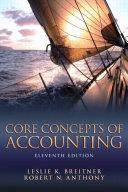Setting Transfer PricesMarket Price versus Full Cost
Ardmore, Inc., manufactures heating and air conditioning units in its six divisions. One division, the Components Division, produces electronic components that can be used by the other five. All the components produced by this division can be sold to outside customers; however, from the beginning, about 70 percent of its output has been used internally. The current policy requires that all internal transfers of components be transferred at full cost.
Recently, Cynthia Busby, the new chief executive officer of Ardmore, decided to investigate the transfer pricing policy. She was concerned that the current method of pricing internal transfers might force decisions by divisional managers that would be suboptimal for the firm. As part of her inquiry, she gathered some information concerning Part 4CM, used by the Small AC Division in its production of a window air conditioner, Model 7AC.
The Small AC Division sells 10,000 units of Model 7AC each year at a unit price of $58. Given current market conditions, this is the maximum price that the division can charge for Model 7AC. The cost of manufacturing the air conditioner is computed as follows:
Part 4CM$6.45Direct materials23.00Direct labor15.00Variable overhead3.50Fixed overhead6.50Total unit cost$54.45
The window unit is produced efficiently, and no further reduction in manufacturing costs is possible.
The manager of the Components Division indicated that he could sell 10,000 units (the division's capacity for this part) of Part 4CM to outside buyers at $12 per unit. The Small AC Division could also buy the part for $12 from external suppliers. The following detail on the manufacturing cost of the component was provided:
Direct materials$2.75Direct labor0.80Variable overhead1.10Fixed overhead1.80Total unit cost$6.45
Cengage Log in X CengageNOWv2 | Online teac x *Homework Help - Q&A from x C Home | Chegg.com X C Get Homework Help With Ch X + X CA https://v2.cengagenow.com/ilrn/takeAssignment/takeAssignmentMain.do?invoker=&takeAssignmentSessionLocator=&i... Q Chapter 10 eBook Print Item Setting Transfer Prices-Market Price versus Full Cost ? Ardmore, Inc., manufactures heating and air conditioning units in its six divisions. One division, the Components Division, produces electronic components that can be used by the other five. All the components produced by this division can be sold to outside customers; however, from the beginning, about 70 percent of its output has been used internally. The current policy requires that all internal transfers of components be transferred at full cost. Recently, Cynthia Busby, the new chief executive officer of Ardmore, decided to investigate the transfer pricing policy. She was concerned that the current method of pricing internal transfers might force decisions by divisional managers that would be suboptimal for the firm. As part of her inquiry, she gathered some information concerning Part 4CM, used by the Small AC Division in its production of a window air conditioner, Model 7AC. The Small AC Division sells 10,000 units of Model 7AC each year at a unit price of $58. Given current market conditions, this is the maximum price that the division can charge for Model 7AC. The cost of manufacturing the air conditioner is computed as follows: Part 4CM $6.45 Direct materials 23.00 Direct labor 15.00 Variable overhead .50 Fixed overhead 5.50 Total unit cost $54.45 The window unit is produced efficiently, and no further reduction in manufacturing costs is possible. The manager of the Components Division indicated that he could sell 10,000 units (the division's capacity for this part) of Part 4CM to outside buyers at $12 per unit. The Small AC Division could also buy the part for $12 from external suppliers. The following detail on the manufacturing cost of the component was provided: Direct materials $2.75 Direct labor 0.80 Variable overhead 1.10 Fixed overhead 1.80 Total unit cost $6.45 Required: 1. Compute the firmwide contribution margin associated with Part 4CM and Model 7AC. Also, compute the contribution margin earned by each division. Check My Work Previous Next Assignment Score: 13.09% All work saved. Email Instructor Save and Exit Submit Assignment for Grading Type here to search O 12:40 PM 3/10/2021Cengage Log in X CengageNOWv2 | Online teac x *Homework Help - Q&A from x C Home | Chegg.com X C Get Homework Help With Ch X + X CA https://v2.cengagenow.com/ilrn/takeAssignment/takeAssignmentMain.do?invoker=&takeAssignmentSessionLocator=&i.. Chapter 10 eBook Print Item Direct labor 0.80 ? Variable overhead 1.10 Fixed overhead 1.80 Total unit cost $6.45 Required: 1. Compute the firmwide contribution margin associated with Part 4CM and Model 7AC. Also, compute the contribution margin earned by each division. Contribution margin Components Division - Part 4CM $ Small AC Division - Model 7AC Company 2. Suppose that Cynthia Busby abolishes the current transfer pricing policy and gives divisions autonomy in setting transfer prices. What should be the minimum transfer price for this part? The maximum transfer price? The transfer price should be $ per unit. This is the maximum v for the Small AC Division and the minimum v for the Components Division. 3. If the Small AC Division Manager is unable to increase v the selling price, production should be discontinued v 4. Given the new transfer price set by the Components Division and your answer to Requirement 3, how many units of 4CM will be sold externally? units Feedback Check My Work 1. See Exhibit 10.4 for example of how to compute contribution margin. 2. See the information on the different methods of predicting minimum and maximum transfer prices. Check My Work Previous Next Assignment Score: 13.09% All work saved. Email Instructor Save and Exit Submit Assignment for Grading Type here to search O 12:40 PM 3/10/2021








